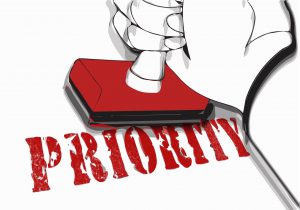Building a business from the ground up is no small feat. It requires patience, commitment, and most of all, strategy. It’s like they say – if you fail to plan, you can plan to fail. So much of business growth is about strategic planning: you need an investment strategy, a growth strategy, a recruitment strategy, and more. One thing that often falls by the wayside is succession planning: building a clear framework for hiring, recruiting, and training top-tier employees who can progress up the chain of command. Succession planning is critical for smooth transitions and uninterrupted business as roles within the company evolve and positions are vacated.

A Strategic Step
Succession planning is one of the first steps you should take when making your business plan. Planning for growth and turnover means that you will be able to find, recruit, train, and retain high quality employees to support your business for the long term. Organizations of all sizes need succession planning, as employees, position requirements, and duties can all change at the drop of a hat. If your business can’t adapt to these changes, then it can’t grow.
Succession planning calls for recruiting employees that you are going to train for advancement and promotion to higher positions within the company. In order to begin this process, you should have a clear plan to develop their knowledge, skills, and certifications. This might include temporarily transferring them to different jobs or departments, having them participate in multidisciplinary projects and on-the-job shadowing, as well as sending them to relevant training seminars or investing in educational materials.
Despite the time and investment all of this requires, there are bottom-line benefits to having a succession plan. A clear succession plan serves as a recruiting tool for strong, growth-oriented employees, who will appreciate knowing where their career with your organization is headed. This minimizes turnover, as new hires are more likely to stay with an organization where they can grow and learn. Additionally, by recruiting and cross-training employees for multiple positions within the organization, you prevent key responsibilities from falling through the cracks if employees resign or take a sudden leave of absence. Consider how much smoother the transition to finding a new employee would be when using a cross-trained employee to pick up the slack, as opposed to using a temporary worker.
5 Steps for Successful Succession Planning
Succession planning should be assessed regularly and your plan should evolve to meet the needs of your organization. There are some key steps that you can take to make the process easier and more effective:
- Identify growth goals. A truly strategic succession plan requires knowing the vision and values of your organization. These will inform where your company is heading, and your succession plan can then include the roles and skills your organization will need to achieve these goals.

Assess the employees you have, any potential gaps, and communicate with candidates.
- Be proactive. There might be times when you know that a valuable team member is leaving the company, but other times you could be caught off guard and left scrambling to replace them. You should spend time evaluating each employee’s key roles and discern what their day-to-day impact is. This can help you become aware of how a sudden departure might affect your businesses’ operations. After identifying these potential gaps in staff, you have a foundation upon which to build a succession plan.
- Take inventory. Assessing your current employees is an important aspect of your succession plan. It’s useful to know which employees in your organization are potential leaders, and what skills they currently offer. The general rule is that there should always be someone to fill in, should an employee depart suddenly (see step 2!). If you do identify skills gaps, then think about beefing up your professional development programs. It’s never too late to start offering learning opportunities for your staff through on-the-job shadowing, a mentoring program, or incentives for completing relevant training or seminars. By building a multifaceted and adaptable team, you are setting yourself and your employees up for success.
- Communicate with candidates. Once you understand what skills you have and what skills you need, you should inform potential candidates of opportunities for them to rise within your organization. While you must be careful not to make empty promises, you can have private meetings with them to discuss their careers, training, and personal development goals, as well as how you plan to support their continued success within your organization. Be open about what qualities in them have led you to consider them for advancement, and give them an opportunity to let you know whether they would even be interested in taking on a new role.

- Prioritize retention. Having systems in place to retain your employees helps ensure that your training, time, and investment in staff advancement are worth it. Offering high quality professional development, financial incentives, and a clear plan for employee growth are all great ways to retain your talented staff.
Succession planning should be a key aspect of any growing business. It is important to have employees who are highly skilled and adaptable to fill any potential gaps that arise as your business expands! By recruiting, training, and retaining high quality employees who can move up through the ranks, you will save time and money in the long run.
One thought on “Setting Yourself Up For Success: Succession Planning”